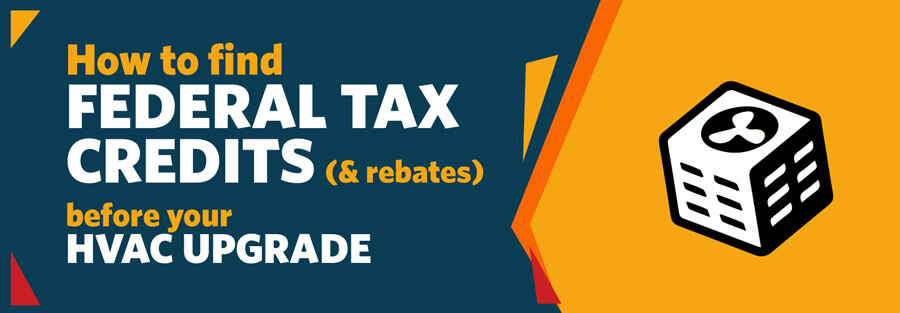According to the Department of Energy, your homes heating and cooling system accounts for nearly 50% of the energy use and energy dollars spent each month. For that kind of money, it is well worth the effort you put into it to provide annual maintenance, replace filters, and keep it clean. The Department of Energy has established a standard of efficiency in recent years and with the federal government on board, tax incentives and other federal income tax credits for residential and commercial energy efficiency are available. Keep reading to learn how to find these federal tax credits and rebates before your HVAC Upgrade.
Before you start this process, ask yourself these key questions:
- Is your HVAC unit over 10 years old?
- Does your HVAC unit continue to need repairs coupled with increased energy bills?
- Is your home humid, too hot or cold, or has an excessive amount of dust?
If you answered yes to any of these questions, you should consider upgrading your HVAC system.
Definitions:
- Rebate: A rebate is a money back or off (in this case) an energy efficient or Energy Star rated appliance. Rebates can ease the cost of upgrading and in Missouri are offered directly from MGE or Laclede Gas. There are often other requirements associated with receiving the rebates as well such as a 96% AFUE rating. Visit the Rebates tab on blueheatingandcooling.com to learn more.
- Federal Tax Credit: Generally speaking, energy efficient tax credits are 10% of cost up to $500 or $50-$300 (energystar.gov). An Energy Star recognized appliances has a minimum SEER number of 13 and an AFUE of 95% or higher. Federal tax credits expire and change often so it is best to your research before you upgrade.
- AFUE rating: The Annual Fuel Utilization Efficiency rating (AFUE), is the standard measure of a gas furnace or boiler’s efficiency in converting fuel to energy. The higher the rating, the more efficient use of fuel. For example, a 90% AFUE rating means that 90% of the fuel used offers warmth for your home and 10% escapes with the exhaust.
- SEER rating: Seasonal Energy Efficiency Ratio (SEER) is the standard measure to indicate the amount of cooling output vs. the energy input. A high SEER number equals increased energy efficiency, with the U.S. Energy Department setting a minimum SEER of 13.
The most efficient way to find federal tax credits and rebates before you upgrade your HVAC unit it to go straight to the source.
- energystar.gov
- savewithnaturalgas.com: both MGE and Laclede Gas customers.
- blueheatingandcooling.com
The qualified technicians at Blue Heating and Cooling are trained to help you evaluate your HVAC needs and as Energy Sense Preferred Professionals, they will help you qualify and find federal tax credits and rebates before your HVAC upgrade.




